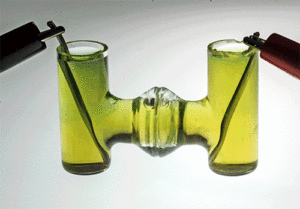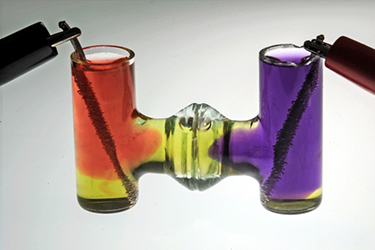
MIT researchers have found a way to eliminate carbon emissions from cement production — a global source of about 8 percent greenhouse gases. The researchers have come up with a new way of manufacturing the material that could eliminate these emissions altogether, and could even make some other useful products in the process.
The findings have been reported in the journal PNAS in a paper by Yet-Ming Chiang, the Kyocera Professor of Materials Science and Engineering at MIT, with postdoc Leah Ellis, graduate student Andres Badel, and others, according to a report in MIT News.

In a demonstration of the basic chemical reactions used in the new process (click image to play animation), electrolysis takes place in neutral water. Dyes show how acid (pink) and base (purple) are produced at the positive and negative electrodes. A variation of this process can be used to convert calcium carbonate (CaCO3) into calcium hydroxide (Ca(OH)2), which can then be used to make Portland cement without producing any greenhouse gas emissions. Cement production currently causes 8 percent of global carbon emissions.
Ordinary Portland cement, the most widely used standard variety, is made by grinding up limestone and then cooking it with sand and clay at high heat, which is produced by burning coal.
The process produces carbon dioxide in two different ways: from the burning of the coal, and from gases released from the limestone during the heating.
Each of these produces roughly equal contributions to the total emissions. The new process would eliminate or drastically reduce both sources, Chiang says.
Print this page
